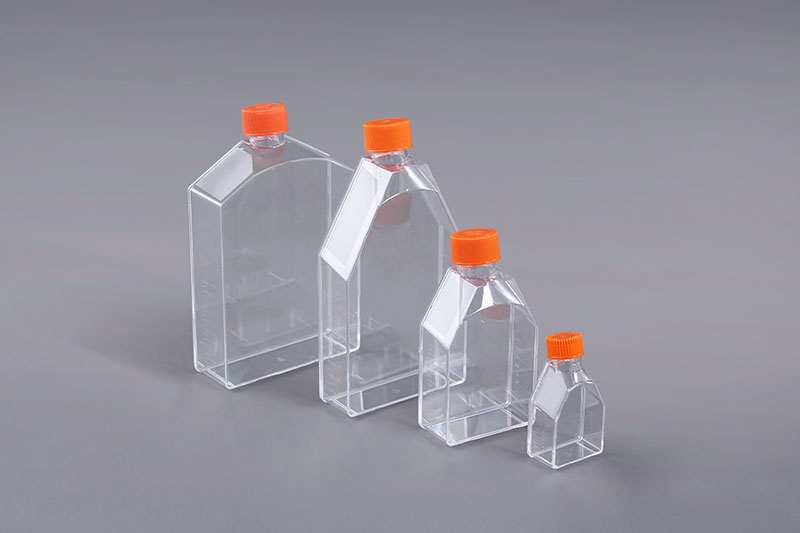Cell culture flasks are a kind of cell consumables often used in the process of cell culture. When culturing cells, various pollutions often cause various problems for the experiment and hinder the process of the experiment. So how to deal with these pollution?
Cell contamination is generally caused by improper aseptic technique, incomplete sterilization of utensils and reagents, and passing of hands or instruments over the opening of the utensil. Once the cells are contaminated, most of them are difficult to recover. The following are the common types and treatment methods of cell contamination:
1. Bacterial contamination: The bacteria are black fine sand-like under an ordinary inverted microscope. Depending on the infected bacteria, they can have different shapes. The culture medium will generally become turbid and yellow, which has a significant impact on cell growth. Most of the cells die within 24 hours. Corresponding antibiotics can be added to the culture medium, such as tetracycline, gentamicin, etc. If the cells are not particularly precious, it is recommended to discard them.
2. Mold contamination: Because the culture medium in the cell culture flask is clear, mold contamination is very difficult to detect early, and it is often too late when it is discovered. Once the cells are contaminated by mold, it is difficult to save. Amphotericin B or Nystatin will not help. It is recommended to discard the contaminated cells decisively and thoroughly disinfect the environment.
3. Black gum worm pollution: Black gum worms are nano-level bacteria, black dots at low magnifications, and black bugs can be seen swimming around at high magnifications. The culture medium is not muddy, and generally does not affect it too much. But if it is too much, it will also affect cell growth and experimental results. The cell survival rate can be improved by increasing the cell seeding density.
4. Mycoplasma contamination: Mycoplasma is not visible under an inverted microscope. In the early stage of contamination, the culture medium is not turbid. After mycoplasma contamination, it can affect all cell growth parameters. If such contamination is found, it is recommended to throw away the cells and repeat the experiment.
The above are several common pollution and treatment methods for cell culture flasks. The prevention of cell pollution should be the main focus, and the culture room, utensils and culture fluid should be disinfected and sterilized. When operating, strictly implement aseptic operation specifications.
The FAI climbed 5.9 percent year-on-year in the first 11 months of 2018, quickening from the 5.7-percent growth in Jan-Oct, the National Bureau of Statistics (NBS) said Friday in an online statement.
The key indicator of investment, dubbed a major growth driver, hit the bottom in August and has since started to rebound steadily.
In the face of emerging economic challenges home and abroad, China has stepped up efforts to stabilize investment, in particular rolling out measures to motivate private investors and channel funds into infrastructure.
Friday's data showed private investment, accounting for more than 60 percent of the total FAI, expanded by a brisk 8.7 percent.
NBS spokesperson Mao Shengyong said funds into weak economic links registered rapid increases as investment in environmental protection and agriculture jumped 42 percent and 12.5 percent respectively, much faster than the average.
In breakdown, investment in high-tech and equipment manufacturing remained vigorous with 16.1-percent and 11.6-percent increases respectively in the first 11 months. Infrastructure investment gained 3.7 percent, staying flat. Investment in property development rose 9.7 percent, also unchanged.
 English
English



















































